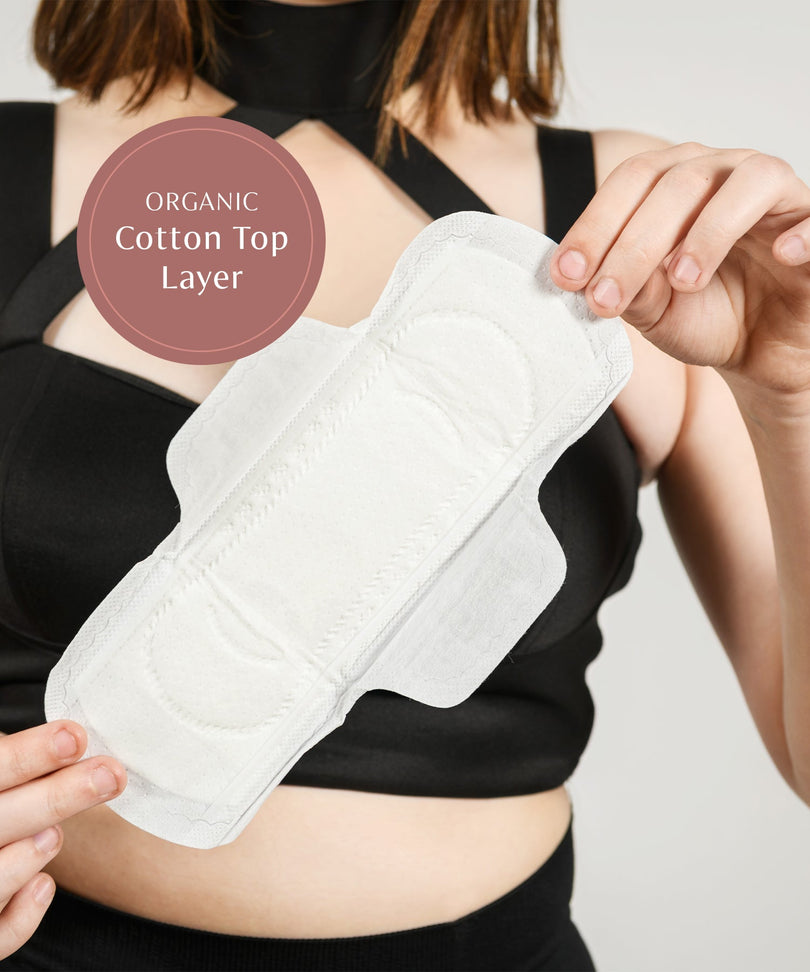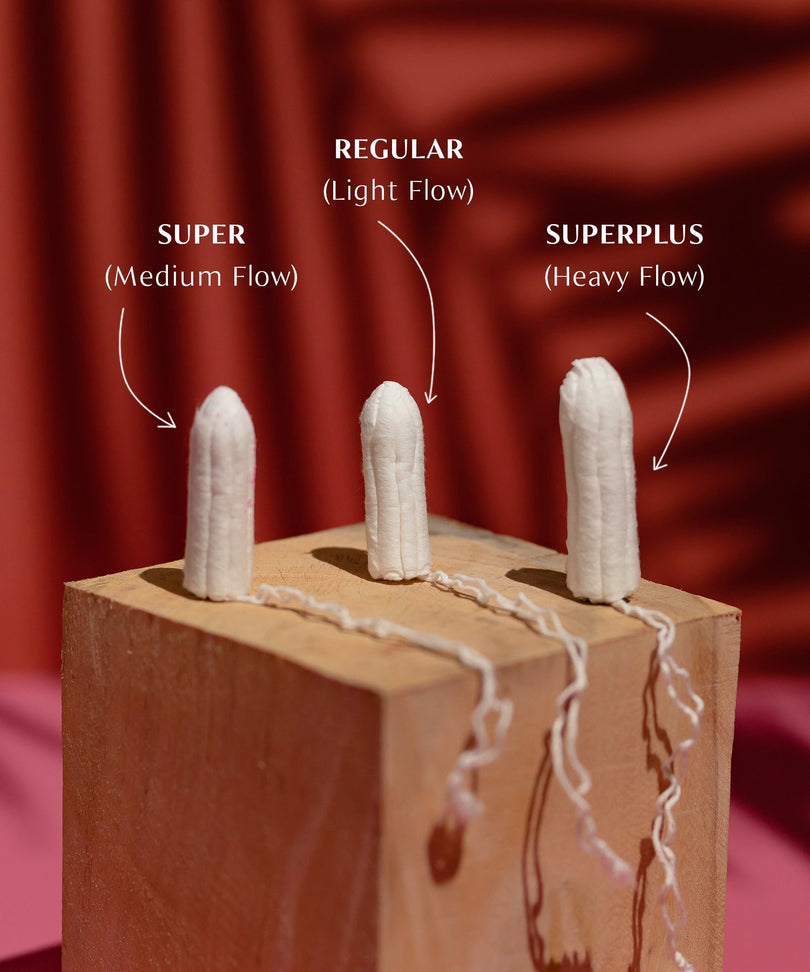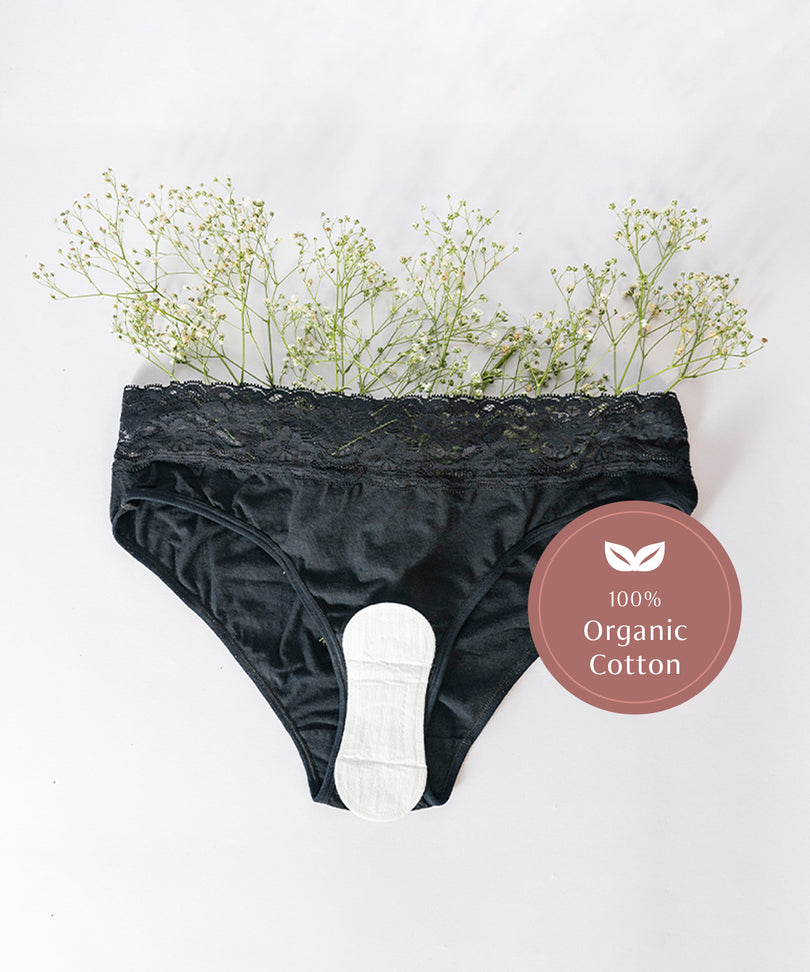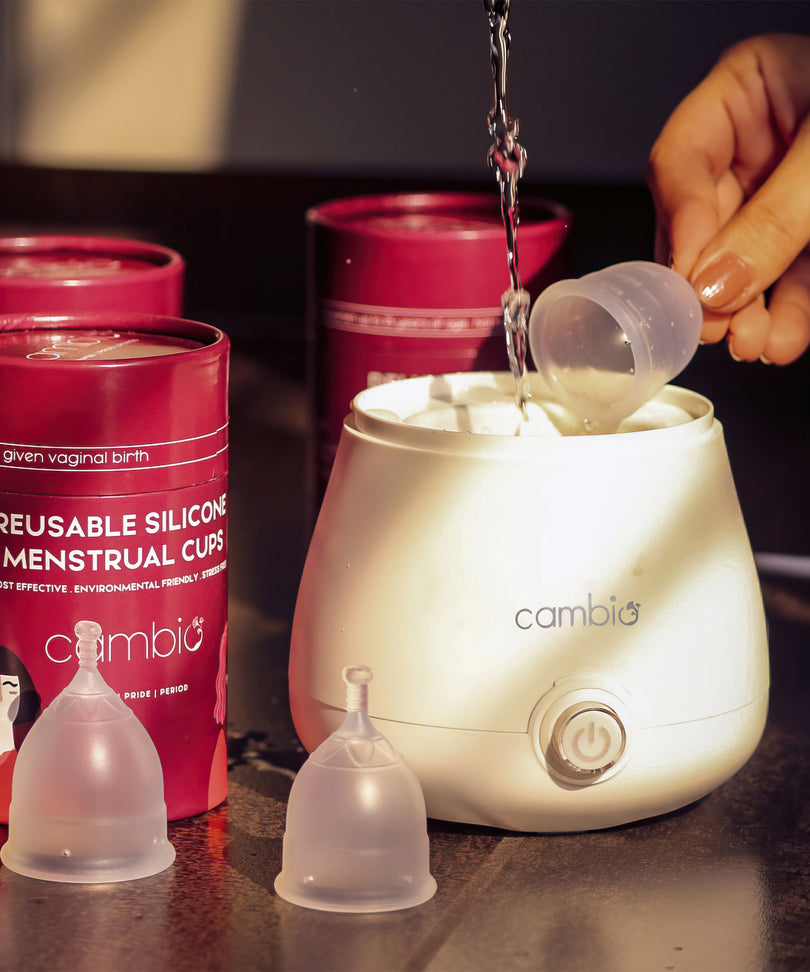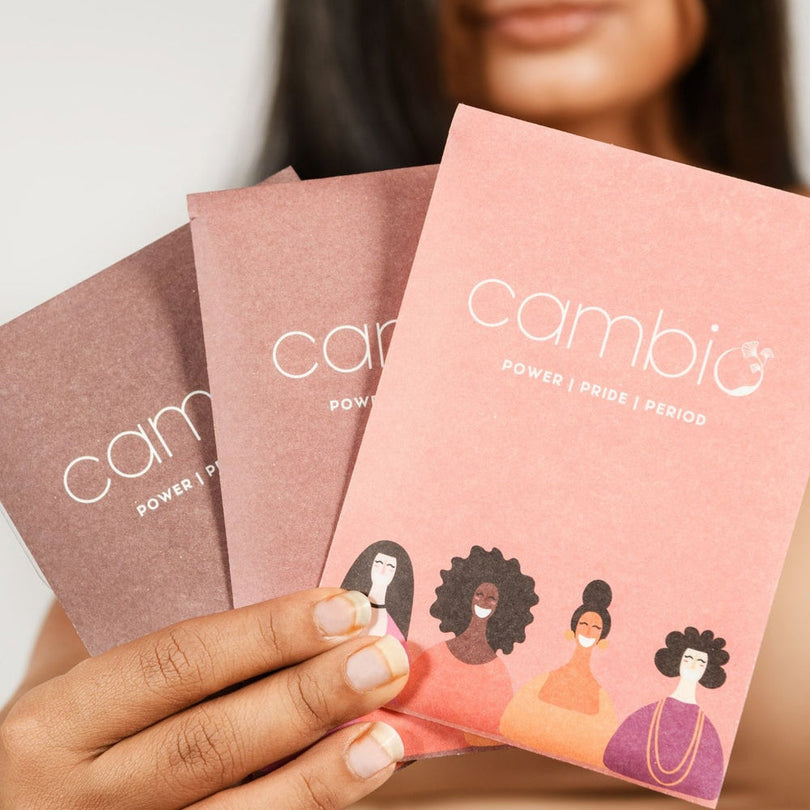Organic sanitary napkins are pads which are made of organic fibres and do not contain any plastics, chemicals or fragrances. The cultivation process of these fibres is also organic and does not use artificial pesticides or fertilizers.
As people started to observe the increasing environmental harm caused by the disposal of plastic-based pads, there arose a need to replace these with plant-based, organic alternatives. Using organic pads is also preventative to many of the health issues caused by frequent use of conventional pads like rashes and infections. Organic pads don’t include any of the harmful chemicals like dioxins and VOCs which are present in conventional pads as they are bleached.
This shift to organic pads resembles the menstrual hygiene before the late 1800s, when there were no disposable period products and makeshift pads were made of bioavailable materials. In India, women used to put an absorbent strip of cotton between layers of cloth.
These were not totally hygienic but they were natural. The organic pads available today win the best of both worlds by using natural materials and mimicking the modern-day design and usage of a menstrual pad!
Best Organic Sanitary Pads Available in India
|
Brand |
Material Used |
Price Range |
Amazon Rating |
|
Cotton |
Rs. 300 for 12 |
4.5/5 ⭐ |
|
|
Saathi |
Banana / Bamboo |
Rs. 360 for 12 |
4/5 ⭐ |
|
Kleen Skin |
Bamboo / Corn Starch |
Rs. 250 for 12 |
NA |
|
Carmesi |
Corn Fibre / Plant-based |
Rs. 150 for 10 |
4.5/5⭐ |
|
Himalayan Hemp |
Hemp |
Not disclosed (Inquire to purchase) |
NA |
We asked our regular customers about whether they had used pads of different materials before and this is what they had to say:
Sakshi: “I alternated between using bamboo and cotton pads for a while and I ended up choosing Cambio’s cotton pads because they were softer and more budget-friendly. Either way, I’m glad I’m using something organic that isn’t giving me rashes or causing me long-term harm.”
Isha: “I’ve been using regular pads since I was 12 and I didn’t know better. I tried a couple of organic pads before settling on Cambio’s cotton pads. Some were of bamboo and some were a plant-based mix. I think what’s important is that I finally got off using those plastic, chemically treated pads and am much safer using organic pads. I suggest finding an organic pad that fits well, feels great on your skin and is sustainable in your budget!”
Also read - Top alternatives of sanitary pads
Types of Fibres used for Organic Sanitary Pads
Organic Cotton PadsCotton is cultivated around the world in tropical and subtropical regions. Its fibres are remarkably absorbent which is why they’re used commonly in towels. Cotton is an easily accessible material for organic pads and is biodegradable. Brands like Cambio make organic cotton pads in India.
Organic Bamboo Pads
Bamboo is grown in many regions in Asia and can grow in different climates. Its fibres are highly absorbent and biodegradable. They also have antibacterial properties. Brands like Saathi and Sparkle sell bamboo pads in India.
Banana Sanitary Pads
Using banana stems to make organic menstrual pads solves the problem of high stem wastage during banana cultivation. Companies like Banapads are renowned for using banana stem fibres to produce organic pads. In India, brands like Saathi make banana pads out of locally sourced materials.
Corn Organic Pads
While corn fibres are not popularly used exclusively to make sanitary pads. Corn fibres can be used in combination with bamboo or banana to alter the feel and absorbency. Corn starch is also used as a top-sheet in organic pads to provide comfort and softness.
Hemp Pads
The cultivation of cannabis is a taboo and controversial subject due to the narcotic nature of the plant and its variants. However, hemp fibres are also used to make textiles and other products. Hemp sanitary pads are durable and highly absorbent. It is also naturally antimicrobial. Himalayan Hemp sells hemp pads to diversify the use of the crop, provide a different source of income to local farmers and make safer products for menstruators.
These next few fibres are not commercially used to make organic pads in India, but you may find it interesting to know just how many different plants we can use to make efficient and natural sanitary pads!
Papyrus Organic Pads
Using the aquatic plant, papyrus has been a popular choice especially in Egypt. In the 15th century, Egyptian menstruators used tampons made of papyrus to soak up menstrual blood. Papyrus is becoming an increasingly popular material for menstrual pads in rural Africa.
Water Hyacinth
Water hyacinth is a common aquatic weed which can actually be harmful to aquatic life if present in excess quantities as it reduces oxygen levels in the water. By making pads out of water hyacinth, their populations can be checked. Water hyacinth pads are cellulose based and biodegradable. Water hyacinth fibres can absorb up to 12 times as much water compared to a conventional pad.
Also read - Do sanitary pads expire?
Which material of organic pads should I choose?
The material of organic pads you use is totally up to your preference as many organic pads share similar advantages when compared to conventional pads. These are some factors you can consider when choosing the material of organic pads:
Availability - Some materials are more prevalent and available than others. Cotton and bamboo are the most popular materials used for organic pads in India. It’ll be much more accessible to stock up on cotton and bamboo pads whether you’re buying them online or in retail medical stores.
Allergens - Just because a product is organic doesn’t make it safe for use for all. If you have an allergy to any of the materials used in an organic pad, it won’t be suitable for you. So opt for one made of a different fibre instead. For example, those with a cotton allergy can opt for a bamboo pad or can use a different period product like a menstrual cup instead.
Comfort - The feel and breathability of the pad’s top-sheet will impact how comfortable the pad is to wear. We recommend trying out pads of different materials to compare the feel of each material you’re considering using.
Absorbency - Depending on your flow, you may choose to use pads of more absorbent fibres. While more accurate research is pending on the different absorbances of organic pads, you can compare the absorbances of the fibres. Cotton is more absorbent than banana, and bamboo is more absorbent than cotton.
Sustainability - Some brands selling organic pads still use plastic in the adhesives and the packaging. If you’re switching to organic pads for environmental reasons, you may want to purchase pads that are eco-friendly through and through from manufacturing, to the product, and finally the packaging.
Price Point - While on average, organic pads tend to be costlier than conventional pads, it's a worthy investment for your reproductive health and for the environment. You can opt for subscription packages or bulk orders with discounts once you find out the type of organic pad you like to save money.
More to read

